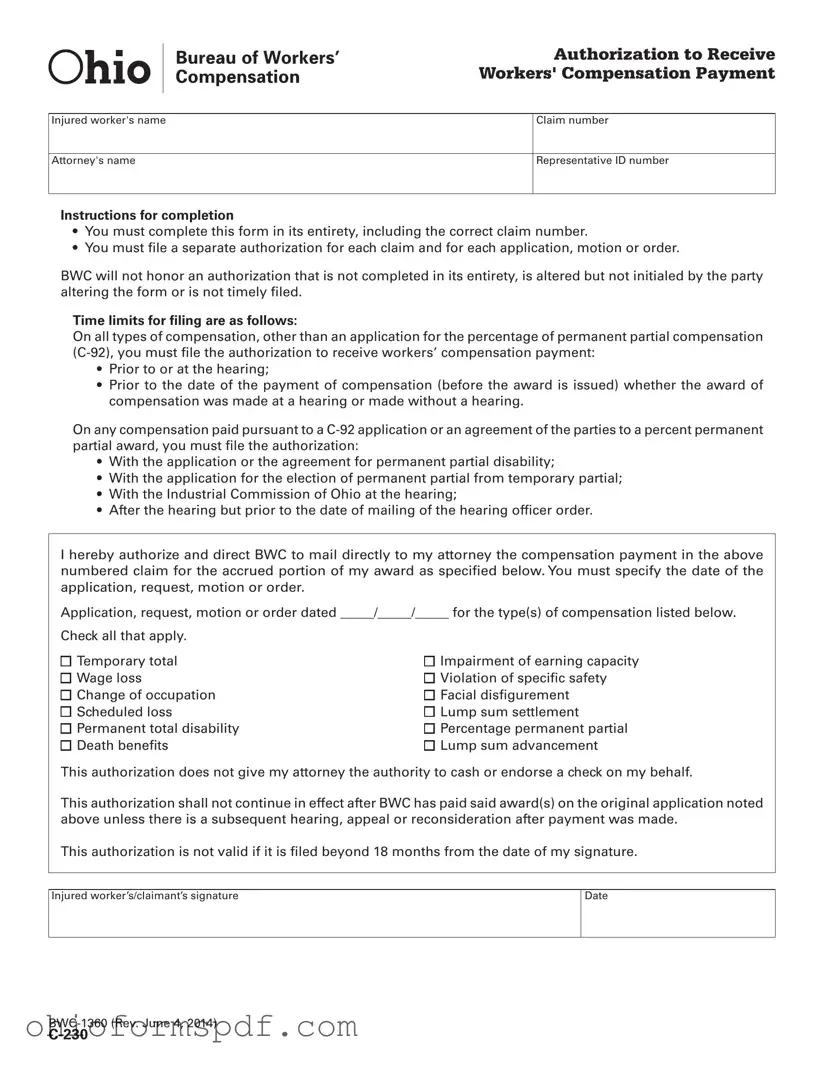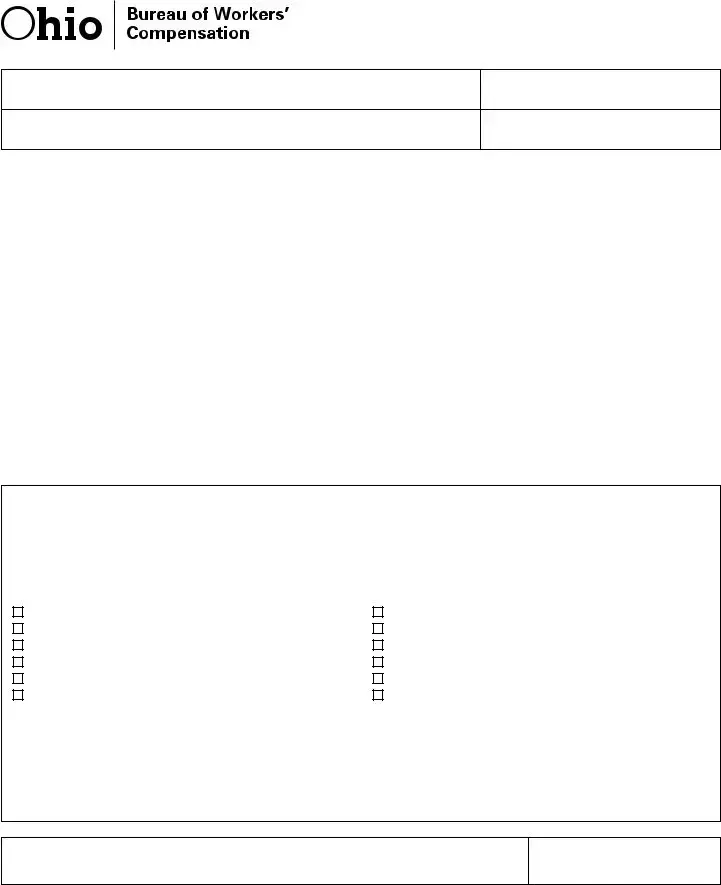What is the purpose of the C-230 Ohio form?
The C-230 form, entitled "Authorization to Receive Workers' Compensation Payment," serves a vital function within the Ohio workers' compensation process. Its main purpose is to authorize the Bureau of Workers' Compensation (BWC) to directly mail compensation payments to an injured worker's attorney for the accrued portion of the worker's award. This form enables efficient handling of compensation benefits, ensuring that they are delivered to the legal representative handling the claim. It caters to various types of compensation, including, but not limited to, temporary total, permanent total disability, and wage loss, among others.
How does one correctly complete the C-230 form?
Completing the C-230 form requires attention to detail and full completion. Every section of the form must be filled out, including the injured worker’s name, the attorney’s name, the claim number, and the representative ID number. Specifications regarding the date of the application, request, motion, or order for which compensation is being sought must be accurately provided. Additionally, the types of compensation applied for must be checked off from the list provided on the form. Modifications to the form must be initialed by the person making the change. Failure to fully and accurately complete the form can result in non-acceptance by the BWC.
Are there specific deadlines for filing the C-230 form?
Yes, the Ohio Bureau of Workers' Compensation imposes strict deadlines for the filing of the C-230 form. For most types of compensation, the authorization must be filed either prior to or at the hearing, or before the date the compensation payment is issued. Specifically, for compensation related to a C-92 application or permanent partial awards negotiated between parties, the form must be filed with the application, at the hearing, or after the hearing but before the mailing of the hearing officer's order. Adherence to these time frames is crucial for the form to be accepted and processed.
What happens if the C-230 form is altered?
Any alterations made on the C-230 form must be initialed by the party making the alteration. This is a critical step to ensure the authenticity and accuracy of the information provided. If alterations are not initialed, the BWC will not honor the authorization. This policy helps prevent misunderstandings or misrepresentations and ensures that all changes are deliberately made and acknowledged by the involved parties.
Is a separate C-230 form needed for each claim?
Yes, an injured worker or their representative must file a separate C-230 form for each claim and for each specific application, motion, or order within those claims. This requirement ensures that each claim’s details are accurately captured and processed, allowing for proper allocation and disbursement of benefits. Filing a separate authorization for each claim helps maintain organization and clarity within the complex workers' compensation system.
What types of compensation does the C-230 form cover?
The C-230 form encompasses a wide range of compensation types under the Ohio workers' compensation system. This includes temporary total, impairment of earning capacity, wage loss, violation of specific safety requirements, change of occupation, facial disfigurement, scheduled loss, lump sum settlement, permanent total disability, percentage permanent partial, death benefits, and lump sum advancements. By checking the appropriate boxes, claimants indicate the specific types of compensation they are authorizing their attorney to receive on their behalf.
Does completing the C-230 form give an attorney the authority to cash or endorse checks on behalf of the injured worker?
No, completing and submitting the C-230 form does not grant the attorney the authority to cash or endorse checks on behalf of the injured worker. The authorization strictly allows for the mailing of compensation payments to the attorney. The actual cashing or endorsing of checks remains a privilege exclusively held by the injured worker, unless additional, separate legal authorization has been obtained.
Can the C-230 authorization continue after the initial award payment has been made?
The authorization provided through the C-230 form does not extend indefinitely after BWC has made the initial award payment on the application noted. It only continues if there is a subsequent hearing, appeal, or reconsideration related to the payment after it was issued. This provision ensures that the authorization is used specifically for the related compensation payment and does not automatically apply to unrelated matters or future compensation without proper filing and approval.
What is the validity period of the C-230 form after it has been signed?
The C-230 form's authorization is not indefinite; it features a validity period that extends 18 months from the date of the injured worker's or claimant’s signature. If the form is filed beyond this 18-month window, it will not be considered valid. This time frame ensures that authorizations are relevant to the claim and its current proceedings, keeping the authorization process within a reasonable timeframe.

